|
Vertebrate skin appendages are a diverse group of micro-organs, including feathers, hair, and scales, that have enabled vertebrates to adapt to distinct modes of life. These structures provide crucial models for investigating how developmental patterning and morphogenesis generate intricate and complex biological forms. Classically, these processes have been attributed to chemical (i.e., molecular) systems driven by the interactions of (effectively) diffusing morphogens. However, mechanical processes, driven by the growth and material properties of embryonic tissues, also play a key role in shaping embryonic form. For example, compressive folding that arises from constrained growth of the skin, frustrated by its attachment to underlying tissues, can explain the formation of crocodile head scales. My research investigates both the chemical and mechanical processes governing skin appendage patterning and morphogenesis in diverse vertebrate models, including the embryonic shark, crocodile, tortoise, and chicken. Collectively, I show that, in addition to paradigmatic chemical signalling processes, mechanically-dominated mechanisms also mediate the development and evolution of vertebrate skin appendage diversity. Plus d'infos... Tags: Developmental biology, Morphogens, Evolutionary developmental biology, Morphogenesis, Morphology, Regeneration, Developmental bioelectricity Annonce publiée le 23-12-2025 |
|
| Institut Curie Centre de recherche - Paris - Amphitheatre Constant Burg, Salle annexe 1 |



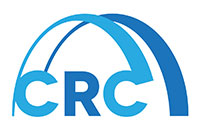






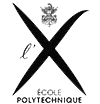





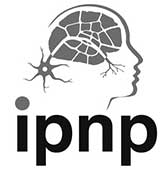



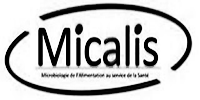






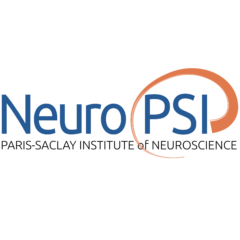






Pour afficher les séminaires d'un seul institut, appuyer d'abord sur 'None' puis sur l'institut de votre choix.
-
-
David Fidock is invited by Molly Ingersoll and Catherine Lavazec.
Plus d'infos...
Tags: Fidock, Ingersoll, Ontario, Louis Pasteur, Pasteur Institute, Ingersoll
Annonce publiée le 29-11-2025


Institut Cochin
Salle Rosalind Franklin -
Plus d'infos...
Tags: Affect, Evolutionary psychology, Feeling, Neuropsychology, Leah Somerville, Jaak Panksepp
Annonce publiée le 22-10-2025


NeuroPSI
Salle de conference Albe-Fessard -
Summury : Our group has recently developed CODA, an AI-based platform to map whole diseased and healthy organs and organisms in 3D and at single-cell resolution. CODA solves the challenge of imaging large volume samples, while preserving high spatial resolution. Through integration with other multi-omic approaches such as spatial transcriptomics and proteomics #8211; CODA allows for unprecedented cellular and molecular profiling of tissues. I will discuss the new biological insights into tumor onset and progression gained from the use of CODA, including ovarian and pancreatic cancers, and associated biomedical implications for early detection of cancer. I will also introduce our new CAR T therapies that exploit synthetic velocity receptors that dramatically increase the ability of traditional CAR T cells to readily infiltrate fibrotic tumors. We demonstrate their enhanced effectiveness in pancreatic, ovarian, and lung cancer.Short Bio: Denis Wirtz is the Theophilius H. Smoot Professor of Engineering and Science Wirtz received a physics engineering degree from the Free University of Brussels in 1988, and MSc and PhD in Chemical Engineering from Stanford University in 1993. Wirtz has been the Vice Provost for Research of Johns Hopkins University since 2014.Through research at the interface of physics, engineering, and oncology, Wirtz has made seminal contributions in cancer cell migration, mechanobiology, 3D imaging, and immuno-oncology. He has developed quantitative methods, including particle-tracking microrheology, multi-compartment organoids and high-throughput cell migration assays. He has introduced CAR T technology to enhance solid tumor infiltration. Recently, he has developed CODA, a, AI-based method to image large volumes of tissues and tumors in 3D dimensions. Denis Wirtz has founded the Johns Hopkins Institute for NanoaBioTechnology (INBT). He is the Director of the NCI-funded postdoctoral training program in nanotechnology for oncology and. Director of the NCI-funded Physical Sciences-Oncology Center (PS-OC) and the Johns Hopkins Cellular Cancer Biology Imaging Cancer (CCBIR) Center. Wirtz is author and co-author of 275 peer-reviewed articles published in journals such as Science, Nature, Cell, Nature Reviews Cancer, and Nature Cell Biology. Wirtz received the NSF Career award in 1995; he is fellow of the Institute for Medical and Biological Engineering (AIMBE), the American Association for the Advancement of Science (AAAS), the American Physical Society (APS), and member of the Royal Academy of Medicine of Belgium.
Plus d'infos...
Tags: Denis Wirtz, Oncology, Physical Sciences in Oncology Network, CAR T cell, Cancer
Annonce publiée le 12-12-2025


Centre de Recherche des Cordeliers -
Plus d'infos...
Tags: Microbiology, Microbiomes, Bacteriology, Ivaylo Ivanov, Bacteria, Human microbiome, Microbiota, Andreas J. Bumler, Jeffrey I. Gordon
Annonce publiée le 19-12-2025


Institut Curie
Centre de recherche - Paris - Amphitheatre Constant-Burg - 12 rue Lhomond, Paris 5e -
Plus d'infos...
Tags: Sonia Garel, Glial cells, Microglia, Garel
Annonce publiée le 11-12-2025


Inst. Bio. Paris Seine
7-9 quai Saint Bernard, 75005 Paris -
Plus d'infos...
Annonce publiée le 14-05-2025


Inst. Bio. Paris Seine
7-9 quai Saint Bernard, 75005 Paris -
Invite par: INEM - Auditorium 1
Seminar topic: Paradox explained: neutrophils enforce chronic immune tolerance via population-wide epigenetic, transcriptional, metabolic and functional adaptations.Dr. Tirouvanziam obtained an Engineering degree from Agro Paris Tech, a Masters in Lung Physiology from Universite Paris XII and PhD in Development Biology also from Agro Paris-Tech, for his work on human xenografts in SCID mice conducted at the Institut d He then pursued postdoctoral studies in Physiology, Genetics, Immunology and Psychiatry at Stanford University in Palo Alto, California, USA, developing a decade-long translational program focused on collection and deep analysis of patient samples, and culminating in phase 2 clinical trials in cystic fibrosis and autism spectrum disorder.Dr. Tirouvanziam moved to Atlanta in 2011, where his translational research group of 15 members focuses on engineering of the human innate immune system and immunometabolic disease. Main diseases of interest affecting the lung (such as cystic fibrosis, COVID-19, and tuberculosis), and other organs systems (diabetes, cold tumors, malaria).
Plus d'infos...
Tags: Immune system, Channelopathies, Cystic fibrosis, Fibrosis, Innate immune system, Immunology
Annonce publiée le 15-12-2025


Institut Necker Enfants Malades
Rabin Tirouvanziam -
Invite par: Lionel NAVARRO - EEB Seminar Series
Plus d'infos...
Tags: Animal models, Bruno Lemaitre, Drosophila, Effector, Daisho
Annonce publiée le 24-10-2025


IBENS
salle Favard, IBENS 46 rue d'Ulm 75005 Paris -
Plus d'infos...
Tags: Sergent, Enea Benedetto
Annonce publiée le 19-08-2025


Neural Networking Night
pub Le Piano Vache - 8 Rue Laplace, 75005 Paris -
On small length-scales, the mechanics of soft materials may be dominated by their interfacial properties as opposed to their bulk properties. These effects are described by equilibrium models of elasto-capillarity and wetting. In these models, interfacial energies and bulk material properties are held constant. However, in biological materials, including living cells and tissues, these properties are not constant, but are ?actively' regulated and driven far from thermodynamic equilibrium. As a result, the constraints on work produced during the various physical behaviors of the cell are unknown. Here, by measurement of elasto-capillary effects during cell adhesion, growth and motion, we demonstrate that interfacial and bulk parameters violate equilibrium constraints and exhibit anomalous effects, which depend upon a distance from equilibrium. However, their anomalous properties are reciprocal, and thus in combination reliably define energetic constraints on the production of work arbitrarily far from equilibrium. These results provide basic principles that govern biological assembly and behavior.
Plus d'infos...
Tags: Surface science, Materials science, Fluid mechanics, Hysteresis, Adhesion, Wetting, Thermodynamics, Thermodynamic equilibrium, Interfacial rheology
Annonce publiée le 02-12-2025


Institut Curie
Centre de recherche - Paris - Amphitheatre Marie Curie -
Invite par: Katharine Worley
Preparing for disasters requires not only the right tools, but also the right knowledge and capacity. These must reflect the real needs and contexts of responders, planners, and communities across Europe. So how do ...
Plus d'infos...
Tags: Disaster management, Educational technology, Emergency management, Humanitarian aid, Occupational safety and health, Process safety
Annonce publiée le 12-12-2025


Institut Pasteur -
Diffuse intrinsic pontine gliomas (DIPG), and more broadly diffuse midline gliomas (DMG), represent the most severe and common forms of malignant brain tumours in children and adolescents. They arise in the pons, thalamus, or spinal cord, and harbour a unique mutation in histone H3 genes involving the substitution of lysine 27 by methionine (H3K27M). Hallmarks of these tumours are their extraordinary invasive capacity and resistance to treatment, leading to a dramatically poor prognosis with a median survival below 2 years. Despite recent progress in our understanding of these tumours and their epigenetic oncogenesis, limited advances have been achieved in the clinic. We have developed a dedicated research program to tackle this incurable disease by combining clinical data, in vitro and in vivo modelling, and molecular and cellular analyses. In this seminar, I will focus on how, despite the apparent homogeneity of DMG linked to a universal driver event altering H3K27 methylation, our molecular analyses support the stratification of paediatric diffuse midline gliomas into distinct subtypes. I will also present data on genetic instability and radioresistance mechanisms within these different subtypes, and discuss how these findings impact our current and future research strategies.
Plus d'infos...
Tags: Brain tumor, Diffuse midline glioma, Glioma, Tumour heterogeneity, H3K27, Draft:Brain Tumour Research
Annonce publiée le 06-01-2026


Institut Curie
Centre de recherche - Paris - Amphitheatre Constant-Burg - 12 rue Lhomond, Paris 5e -
TBA
Plus d'infos...
Tags: Thijs, Draft:God Save The Tuches, Draft:Poongodi
Annonce publiée le 18-10-2025


Laboratoire Jean Perrin
Laboratoire Jean Perrin - Campus Jussieu - T 22-32- 4e et. - P407 -
Invite par: Webinar - zoom registration
BioRender organise un web-seminaire pour l'INEM au sujet des nouvelles fonctionnalites et outils du logiciel. La visioconference est prevue le mardi 13 janvier de 15h a 16h, en prevoyant du temps pour les questions.Vous etes toustes conviees, plus particulierement si vous utilisez BioRender au quotidien !Lisez le flyer et inscrivez-vous ici.ou copiez ce lien : https://biorender.zoom.us/webinar/register/WN_qZfzf2I8TsGtOxGZrniHNw BioRender is organising a web-seminar for INEM members on the topic of the latest news and tools of the software.The videoconference is planned on Tuesday, 13th of January , from 3pm to 4pm - including questions time.You are all invited, even more if you are a regular user of Biorender!Read the flyer and register here.or copy paste this link: https://biorender.zoom.us/webinar/register/WN_qZfzf2I8TsGtOxGZrniHNw Image
Plus d'infos...
Annonce publiée le 15-12-2025


Institut Necker Enfants Malades
Van Thilavanh -
Comprehension des bases moleculaires des tumeurs urotheliales pour ameliorer le diagnostic et les traitements Ce cours offre un apercu pratique et actualise des avancees dans la recherche, la biologie et le traitement des cancers urotheliaux. Il couvre les cancers de la vessie infiltrants et non infiltrants, les cancers des voies urinaires superieures ainsi que leurs metastases. Il met en lumiere de nouvelles connaissances sur les mecanismes de la maladie ainsi que des strategies diagnostiques et therapeutiques innovantes. Il est destine aux cliniciens et chercheurs engages dans le progres contre le cancer urothelial. L objectif de ce cours est de fournir une vue d ensemble precise et actualisee des dernieres recherches et des developpements cliniques dans le domaine du carcinome urothelial, qu'il s'agissedes cancers de la vessie invasifs et non invasifs du muscle, des cancers des voies excretrices superieures, et leurs metastases. Cela permettra a la fois de promouvoir une meilleure comprehension mecanistique de ces maladies, des methodologies utilisees pour les etudier et d'explorer de nouvelles strategies diagnostiques et therapeutiques.?
Plus d'infos...
Annonce publiée le 22-10-2025


Institut Curie
Centre de recherche - Paris - Amphitheatre Helene Martel-Massignac (BDD) -
Gene expression must be robustly controlled in the face of environmental challenges and cellular activity changes. How the millions of transcripts that coexist in the cytosol coordinate their expression to cellular activities and environments remains to be addressed. Here, using C. elegans oogenesis as a model, we focused on RNAs that co-assemble with regulatory binding proteins (RBP) into RNA condensates upon quiescence and across temperature changes.Taking advantage of a cutting-edge approach that we previously developed (Hubstenberger et al., Mol Cell 2017; Cardona et al., Cell 2023), and that combines the purification sequencing of RNA condensates with single molecule RNA imaging, we investigated (1) the structural mechanisms that drive RNA supramolecular organization, and (2) the emerging properties that determine condensate functionalities and RNA fate. We found that maternal RNA super-assemblies are transcriptome-wide reservoirs that buffer the accumulation of repressed mRNAs through a concentration dependent phase separation, and sort RNAs depending on sequence identity. This buffering capacity controls RNA:RBP and RNA:RNA stoichiometries and maintains cellular homeostasis in the face of temperature changes. The sorting selectivity across RNA diversity was the result of RNA homotypic self-assemblies, and allowed each RNA species to be regulated independently across oocyte differentiation, during activity switches, or in adaptation to diverse environments. Condensates also structurally protected RNAs from pathological aggregation upon stress, and preserved the ability of mRNAs to quickly solubilize when optimal condition resumed. Altogether, physiological condensates structurally protect RNAs from stress induced pathological aggregation, while their buffering and sorting capacity provide compositional control of the cytosolic transcriptome that is adapted to both cellular activity and environmental changes.
Plus d'infos...
Tags: Molecular biology, RNA, Gene expression, Omics, Oocyte, Transcriptome, Biomolecular condensate
Annonce publiée le 23-12-2025


Institut Curie
Centre de recherche - Paris - Amphitheatre Marie Curie -
Summury : CD4?Foxp3? regulatory T cells (Tregs) suppress antitumor immune responses and are therefore compelling targets for immunotherapy. However, the mechanisms governing Treg stability and suppressive function within the tumor microenvironment remain poorly understood. In this presentation, I will discuss recent unpublished findings. First, I will show that the tumor microenvironment promotes substantial Treg instability, as many Tregs lose Foxp3 expression. Consequently, a significant fraction of CD4?Foxp3? T cellstypically considered conventional CD4 T cells are actually ex-Tregs. Second, I will highlight the critical role of TNF receptor type 2 (TNFR2) expression by Tregs in regulating antitumor immunity. TNFR2 expressed on Tregs modulates local immune responses by influencing inflammatory cytokine production by effector T cells and inducible nitric oxide synthase expression by myeloid cells. Investigating Treg stability and TNFR2? Tregs within tumors provides deeper insight into the mechanisms controlling antitumor immunity.
Plus d'infos...
Tags: Immunology, T cells, Immune system, Regulatory T cell, Tumor microenvironment, Cytokine, FOXP3, Infectious tolerance, IKZF2
Annonce publiée le 17-11-2025


Centre de Recherche des Cordeliers -
We are hostingEasyPanel‘s andOMIQ‘s teams for aLunch et Learnon the respective software updates/new featureson Friday, January 16th from 12-2PM in the room 28-01-01E.
Plus d'infos...
Tags: 2PM, Louis Pasteur
Annonce publiée le 06-01-2026


Institut Pasteur
Batiment: Francois Jacobs Salle: 28-01-01E -
Parmi les lesions genomiques, les cassures double brin (CDB) de l ADN sont rares mais parmi les plus deleteres et sont impliquees dans plusieurs maladies humaines. Cependant, notre comprehension des mecanismes de formation et de reparation de ces cassures dans les cellules au repos reste limitee. Il y a quelques annees, nous avons montre que les lesions de la topoisomerase I bloquant la transcription induisent la production de CDB dans les cellules non replicatives. Nous avons ensuite identifie un mecanisme de leur formation, demontrant qu elles resultent de deux cassures simple brin rapprochees sur des brins d ADN opposes, toutes deux produites lors de la transcription. Afin d etudier les consequences cliniques de ces CDB transcriptionnelles, nous avons genere des cellules porteuses de la mutation homozygote TDP1 H493R, responsable du syndrome neurodegeneratif SCAN1. Cette mutation entraine une accumulation de CDB transcriptionnelles, due a la fois a une augmentation de la formation des cassures et a une reparation defectueuse, suggerant que la persistance de CDB transcriptionnelles dans les cellules neuronales non replicatives contribue a la neurodegenerescence. Plus recemment, nous avons decouvert que les cassures double brin transcriptionnelles peuvent egalement favoriser l emergence de mutations de resistance secondaires en reponse aux traitements anticancereux cibles. Ainsi, nos resultats revelent que les cassures d ADN associees a la transcription sont plus frequentes et cliniquement pertinentes qu on ne le pensait, soulignant un lien crucial entre le stress transcriptionnel et l etiologie de la maladie.
Plus d'infos...
Annonce publiée le 20-12-2025


Institut Curie
Centre de recherche - Paris - Amphitheatre Marie Curie -
Invite par: EGO-STENGEL Valerie
Plus d'infos...
Tags: Memory, Memory consolidation, Consolidation
Annonce publiée le 22-10-2025


NeuroPSI
Salle de conference Albe-Fessard -
Nous avons le plaisir d’annoncer la prochaine conference internationale : « Forces at Play : Emerging Themes in Mechanobiology - In Memoriam of Professor Michael P. Sheetz » qui se tiendra du 19 au 21 janvier 2026 a l’Institut Jacques Monod, Universite Paris Cite, Paris, France. Cet evenement special rend hommage a l’heritage du professeur Michael P. Sheetz, pionnier dans le domaine de la mecanobiologie, et reunira des chercheurs, des etudiants et des innovateurs de premier plan du monde entier afin d’explorer les dernieres avancees en matiere de mecanique cellulaire, de biophysique et de disciplines connexes. Retrouvez la liste des speakers ainsi que les informations concernant les inscriptions sur le site : https://mikeinmemoriam.sciencesconf.org/?lang=en Les inscriptions sont ouvertes jusqu’a la mi-novembre. Le comite d’organisation : Nicolas Biais, Nils Gauthier, Benoit Ladoux, Olivier Rossier
Plus d'infos...
Annonce publiée le 20-09-2025
Institut Jacques Monod
Institut Jacques Monod Amphitheatre Buffon, 15 rue Helene Brion, Paris, France -
TBA
Plus d'infos...
Tags: Draft:God Save The Tuches, Draft:Poongodi
Annonce publiée le 18-10-2025


Laboratoire Jean Perrin
Laboratoire Jean Perrin - Campus Jussieu - T 22-32- 4e et. - P407 -
TBA
Plus d'infos...
Tags: Randlett, Draft:Poongodi, Draft:Punitha
Annonce publiée le 06-11-2025


Laboratoire Jean Perrin
Laboratoire Jean Perrin - Campus Jussieu - T 22-32- 4e et. - P407 -
Invite par: Cirb
Plus d'infos...
Annonce publiée le 15-10-2025


College de France
au College de France - Salle D2 11 place Marcelin Berthelot - 75005 Paris -
La prochaine reunion du cytoskeleton club aura lieu mercredi 21 janvier a l’Institut Pasteur : Shreyangi CHAKRABORTY (PhD student, C. Janke's team, Institut Curie Orsay) presentera «The role of tubulin polyglutamylation in controlling the microtubule functions in healthy and degenerating neurons Amir KHOSRAVANIZADEH (post-doc, N. Minc's team, IJM) presentera «Agent-based simulations of cytoplasm crowding and viscoelasticity. »
Plus d'infos...
Tags: Cytoskeleton, Post-translational modification, Protein structure, Tubulin, Microtubule, Polyglutamylation, Cytoplasm, Curie Institute
Annonce publiée le 07-01-2026


Institut Jacques Monod
Insitut Jacques Monod -
Extracellular vesicles (EVs) are increasingly recognized as critical mediators in the pathogenesis of fungal infections, particularly those caused by Cryptococcus species—opportunistic pathogens responsible for life-threatening diseases in immunocompromised individuals. While structural models of fungal EVs have been proposed, they often overlook the natural heterogeneity within EV populations. Although the identification and functional analysis of EV subpopulations have been well explored in mammalian systems—and to a lesser extent in plants—this area remains underexplored in fungi. In this study, we isolated and characterized EVs from Cryptococcus using a combination of size-, weight-, and density-based separation techniques, allowing us to resolve distinct EV subpopulations. Importantly, we identified a previously uncharacterized small EV population, currently undergoing functional investigation. Preliminary data suggest this subpopulation may carry unique molecular signatures, with several candidates showing promise as biomarkers. Given the established roles of Cryptococcus-derived EVs in host–pathogen interactions, immune modulation, and the dissemination of virulence factors, these findings could significantly enhance our understanding of fungal pathogenesis. Ultimately, by revealing new layers of EV diversity, our work aims to facilitate the development of targeted biomarkers for early detection and to support novel therapeutic strategies focused on EV-mediated processes. Paris postdoc seminar series
Plus d'infos...
Tags: Tremellomycetes, Yeasts, Vesicles, Cell biology, Zoonoses, Extracellular vesicle, Cryptococcus, Vesicle, Pathogenic fungus, EV, Arturo Casadevall, Thomas G. Mitchell
Annonce publiée le 01-10-2025


Institut Cochin
Salle Rosalind Franklin -
Invite par: Arnaud Chastanet
Phages are diverse and abundant within microbial communities, where they play major roles in their evolution and adaptation. Phage replication – and multiplication – is generally thought to be restricted within a single or narrow host range. We use and reprocess published and newly generated proximity ligation-based metagenomic Hi-C (metaHiC) data from various environments to explore virus-host interactions at large scale. We reconstructed 4,975 microbial and 6,572 phage genomes of medium quality or higher. MetaHiC yielded a contact network between genomes and enabled assignment of approximately half of phage genomes to their hosts, revealing that a substantial proportion of these phages interact with multiple species and this, in environments as diverse as oceanic water column or the human gut. This observation challenges the traditional view of a narrow host spectrum of phages by unveiling that multi-host associations are common across ecosystems, with implications how they might impact ecology and evolution and phage therapy approaches.
Plus d'infos...
Tags: Bacteriophages, Bacteriophage, Phage therapy, Virus, Phage ecology, Corynebacteriophage
Annonce publiée le 05-12-2025


Institut Micalis
Auditorium 442 - Institut Micalis -
We& investigate the dynamic interactions between leukemic cells and their vascular microenvironment. Combining& in vivo& imaging, humanized 3D models, and multi-omics approaches, we explore how the niche contributes to leukemia progression, treatment resistance, and immune evasion, particularly in the bone marrow and central nervous system.
Plus d'infos...
Tags: Stem cells, Tumor microenvironment, Tumors, Bone marrow, Multiomics
Annonce publiée le 17-11-2025


Centre de Recherche des Cordeliers -
Endogenous retroviruses (HERVs), the relics of ancient viral integrations are increasingly emerging as active wiring within our genome, functioning as cis-regulatory elements that control nearby immune genes. This seminar will highlight evidence, including from our own lab, that HERVs assemble stress-responsive gene-regulatory networks operating both locally (in cis) and at a distance (in trans) to fine-tune immune activation and inflammatory balance across diverse biological contexts, from placenta to brain to blood. A striking human example comes from HIV elite controllers; a rare group of individuals who suppress HIV without therapy whose CD4 T cells are marked by a distinctive repertoire of transcriptionally active HERVs regulating nearby antiviral factors. Beyond cis regulation, the human genome also retains a reservoir of HERV sequences capable of encoding viral gag and envelope proteins with the power to reshape cellular physiology: some envelopes can protect cells by blocking viral entry, exemplifying viral genes repurposed for host defence, while our data suggest that gag and certain envelopes, reactivated in cancers or during immune activation can perturb distant tissues, including the CNS, forging unexpected connections between cancer progression and neurodegeneration. Together, these findings reveal an underappreciated continuum across immunity, cancer and brain health, where recycled? retroelements can be protective in one context yet pathogenic when mis-expressed in another.
Plus d'infos...
Tags: Molecular biology, Virology, Retroviridae, Endogenous retrovirus, Non-coding DNA, Retrovirus, Antiviral drug, Group-specific antigen, HIV, Human endogenous retrovirus-W, Intrinsic immunity
Annonce publiée le 06-01-2026


Institut Curie
Centre de recherche - Paris - Amphitheatre Helene Martel-Massignac (BDD) -
Invite par: ESCHBACH Claire
Plus d'infos...
Tags: Nervous system, Neurology, Neurophysiology, Neuroscience, Brain
Annonce publiée le 22-10-2025


NeuroPSI
Salle de conference Albe-Fessard -
Invite par: Institut Necker Enfants Malades - Auditorium 3
Seminar topic: Immune and metabolic control of sensorimotor physiology and repairI am a Professor of Neuroscience at Imperial College where I hold a Harnett Chair in Restorative Neuroscience and where I lead a research group that investigates physiological and injury mechanisms of the sensorimotor system. I am also a consultant Neurologist within the Imperial NHS Trust. My research and clinical work have broad implications for conditions spanning from traumatic, vascular, inflammatory, degenerative and metabolic damage to the spinal cord, spinal roots and peripheral nerves and for pain syndromes in the nervous system. Previously, since 2006, I worked at the University of Tuebingen, Germany as a Research Group Leader, where I was also a consultant clinician in Stroke and General Neurology.I did my post-doctoral training in Neuroscience studying gene expression regulation after spinal cord injury at Georgetown University, Washington DC, 2001-2004 where I became research Instructor (2004-2006). I studied Medicine at La Sapienza University and did my Neurology training at Catholic University, Rome, Italy.Research in my group aims to investigate the molecular signalling mechanisms that discriminate between axonal regeneration and regenerative failure including following peripheral and spinal cord injuries respectively.Since axonal regeneration, wound healing and repair in the nervous system are imperfect and inefficient, enhancing the regenerative properties and wound healing in the injured central nervous system is critical to promote recovery of function and limit neurological disability in both spinal cord and peripheral nerve disorders.The lab studies how environmental factors including dietary regimens and physical activity affect metabolism and immunity that in turn can influence physiology and repair in the sensorimotor system to optimise sensorimotor function. Our work has broad implications for conditions spanning from traumatic, vascular, inflammatory, degenerative and metabolic damage to the spinal cord, spinal roots and peripheral nerves.
Plus d'infos...
Tags: Sensory systems, Neurotrauma, Motor system, Skeletal system, Spinal cord, Axon, Lorne Mendell, Somatic nervous system
Annonce publiée le 15-12-2025


Institut Necker Enfants Malades
Simone Di Giovanni -
Invite par: Angelique Michaut
January 26, 2026Duclaux Amphitheater - 9.20am - 6.00 pm An english in person symposium organised since 2015 by the Medical Direction dedicated to translational research. Free but mandatory registration : link to register
Plus d'infos...
Tags: Stem cells, Tissue engineering, Biotechnology, Organoid
Annonce publiée le 17-12-2025


Institut Pasteur
Batiment Duclaux, salle , -
Ce cours a pour but de rassembler les bases, les connaissances recentes et les perspectives therapeutiques autour de l'utilisation du systeme immunitaire de l'enfant pour cibler les cancers pediatriques, des particularites biologiques chez l'enfant aux innovations les plus poussees d'ingenierie cellulaire. Il se focalisera plus particulierement sur les tumeurs solides pediatriques, en tirant les enseignements des succes recents et defis restants dans les hemopathies malignes de l'enfant. Il rassemblera des acteurs nationaux et internationaux impliques dans ce domaine, dont les avancees precliniques et cliniques recentes permettent d'esperer des progres therapeutiques majeurs dans les annees a venir. Objectifs Exposer aux participants les recentes avancees en immunotherapie des cancers pediatriques. Mettre en valeur les specificites des cancers pediatriques et de l'immunite des enfants a prendre en compte pour les approches d'immunotherapie. Explorer leur developpement en recherche fondamentale, preclinique et clinique.
Plus d'infos...
Annonce publiée le 23-10-2025


Institut Curie
Centre de recherche - Paris - Amphitheatre Helene Martel-Massignac (BDD) -
A year ago, the bioimaging and core facility communities lost a pioneering figure whose influence was especially significant within the Institut Pasteur community. Spencer Shorte’s dedication and contributions were pivotal, particularly within the Cell ...
Plus d'infos...
Tags: Prophecy, Pasteur Institute, Yasmine Belkaid, Louis Pasteur, Visionary
Annonce publiée le 05-12-2025


Institut Pasteur
Batiment Duclaux, salle Amphitheater Duclaux, -
Plus d'infos...
Tags: Gregory
Annonce publiée le 20-11-2025


Centre de Recherche des Cordeliers -
L'Institut Curie et le SiRIC Curie sont heureux d organiser laHuitieme Journee d'echanges sur le Melanome Uveal qui aura lieu levendredi 30 janvier 2026, en presentiel (a l'Institut Curie, Paris) et en ligne. Cette journee, destinee aux patient(e)s et a leurs proches, permettra d'en apprendre plus sur la maladie et sa prise en charge, ainsi que sur la recherche qui est menee par nos medecins et chercheurs. Le programme est en cours de finalisation et sera diffuse bientot aux inscrits et sur le site https://siric.curie.fr/page/journees-melanome-uveal. Cette annee encore, plusieurs presentations seront consacrees au vecu, aux effets secondaires, aux essais cliniques et a l accompagnement socio-professionnel. Vous pouvezvous inscrire sur ce site: https://my.weezevent.com/journee-melanome-uveal-2026-8eme-edition L'inscription est gratuite mais obligatoire, afin de nous aider a preparer au mieux cette journee. Pour toute question ou probleme rencontre, merci de nous ecrire a m.melanome-uveal2026@curie.fr.
Plus d'infos...
Annonce publiée le 25-11-2025


Institut Curie
Centre de recherche - Paris - Amphitheatre Constant-Burg - 12 rue Lhomond, Paris 5e -
TBC
Plus d'infos...
Annonce publiée le 23-12-2025


Institut Curie
Centre de recherche - Paris - Amphitheatre Marie Curie -
Invite par: Institut Necker Enfants Malades - Auditorium 3
Seminar topic: Unravelling the molecular mechanisms of clathrin-independent endocytosis to elucidate its pathophysiological functionsAfter obtaining my Ph.D. in bioengineering from UCLouvain (Belgium) in 2010 under the supervision of Prof. Pierre Morsomme, I joined the Institut Curie in Paris in January 2011, where I worked in the laboratory of Dr. Ludger Johannes. In 2015, I returned to UCLouvain for a second postdoctoral period. In January 2020, I was appointed Assistant Professor in cell biology in the Department of Biology, Faculty of Sciences, at the University of Namur (UNamur), Belgium. This position enabled me to launch my own research group and to establish a state-of-the-art bioimaging platform. Leveraging these advanced microscopy tools, my research group focuses on the role of BAR (Bin/Amphiphysin/Rvs) domain proteins in membrane remodelling during cellular processes. In particular, we investigate these mechanisms along two complementary research axes aiming at eludicating: (i) novel clathrin-independent endocytic mechanisms, and (ii) cellular responses to nanoscale environmental cues, especially through nanotopography-driven mechanosensing. Our work builds on the unique ability of BAR domain proteins to sense and/or induce membrane curvature, thereby regulating membrane deformation, vesicle formation, actin remodelling, and signal transduction. Building on our fundamental discoveries, we also aim to expand our research toward more translational directions by connecting these mechanisms to pathophysiological contexts such as cancer and host-pathogen interactions. In 2024, I was promoted to Professor at UNamur. Our research is supported by funding from the FNRS, the Francqui Foundation, and various institutional grants.
Plus d'infos...
Tags: Membrane biology, Cellular processes, Peripheral membrane proteins, Cell biology, Clathrin, Proteins, Membrane curvature, Endocytosis, BAR domain, Vesicle, Ludger Johannes, Cytosis
Annonce publiée le 15-12-2025


Institut Necker Enfants Malades
Henri-Francois RENARD -
Paris post-doc seminar series.
Plus d'infos...
Tags: Queen of FCW, Serena Deeb, Serena, Doc
Annonce publiée le 05-12-2025


Institut Cochin
Salle Rosalind Franklin -
Invitee par l’equipe Ladoux/Mege, Jennifer Young (Assistant Professor, Biomedical Engineering Department,Principal Investigator, Mechanobiology Institute National University of Singapore) va presenter un seminaire de l’Institut Jacques Monod sur le theme : Biomaterial design for extracellular matrix mechanobiology Resume : Extracellular cues stemming from the matrix dictate a multitude of cellular functions, from motility to stem cell differentiation. Yet, the extracellular environment is inherently complex and thus hinders our understanding of specific matrix-based contributions to cellular behavior. Our work focuses specifically on the context of age-related matrix remodeling and engineering materials capable of recapitulating matrix properties in vitro at both the micro and nano length scales. This talk will highlight some of our material approaches to control cell-matrix interactions in the context of aging and mechanobiology. Our strategies ultimately aim to interrogate the cell-matrix interface using highly defined biomaterial systems that can inform future matrix-based treatment strategies. Jennifer Young was trained as a biomedical engineer at the University of California, San Diego (La Jolla, CA, USA). During her Ph.D. with Prof. Adam Engler, she studied the role of mechanics in cardiac development and created a hydrogel system capable of mimicking dynamic tissue properties in vitro. Inspired by the role of extracellular matrix (ECM) in dictating cell behavior and fate, she joined the Cellular Biophysics group of Prof. Joachim Spatz at the Max Planck Institute for Medical Research (Heidelberg, Germany) to study how nanoscale ECM cues regulate cancer cell function. She established the Soft Nano-Biomaterials Lab in 2021 at the Mechanobiology Institute and Biomedical Engineering Department, National University of Singapore where her work focuses on identifying and mimicking nano-to-microscale matrix properties and unraveling their contributions to cellular behavior.
Plus d'infos...
Tags: Extracellular matrix, Mechanobiology, Cell culture techniques, Biomedical engineering, Tissue engineering, Wellcome Trust Centre for Cell-Matrix Research
Annonce publiée le 06-01-2026


Institut Jacques Monod
Institut Jacques Monod Salle Francois Jacob, 15 rue Helene Brion, Paris, France -
Plus d'infos...
Annonce publiée le 05-01-2026


Inst. Bio. Paris Seine
7-9 quai Saint Bernard, 75005 Paris -
Plus d'infos...
Annonce publiée le 02-09-2025


Inst. Bio. Paris Seine
7-9 quai Saint Bernard, 75005 Paris -
Plus d'infos...
Tags: Ens, Carlos Costa
Annonce publiée le 19-08-2025


Neural Networking Night
pub Le Piano Vache - 8 Rue Laplace, 75005 Paris -
Plus d'infos...
Tags: Ens, cole normale suprieure
Annonce publiée le 30-08-2025


Neural Networking Night
pub Le Piano Vache - 8 Rue Laplace, 75005 Paris -
TBA
Plus d'infos...
Tags: Recho Omondi, Draft:God Save The Tuches, Draft:Poongodi
Annonce publiée le 18-10-2025


Laboratoire Jean Perrin
Laboratoire Jean Perrin - Campus Jussieu - T 22-32- 4e et. - P407 -
Invite par: CIRB-College de France
Plus d'infos...
Annonce publiée le 06-01-2026


College de France
au College de France - Salle D2 - 11 place Marcelin Berthelot - 75005 Paris -
Join us for a focused one-day seminar at the Institut Curie in Paris, dedicated to the latest advancements in spatial analysis and transcriptomics. Immerse yourself in cutting-edge research, methodologies, and tools, focusing on the Visium V2/HD platform. Hear from experts from key institutes and join interactive discussions. Join us for a day of networking, learning, and unlocking new insights in spatial biology! Make sure to reserve your seat:https://pages.10xgenomics.com/WEB-2026-02-EVENT-EMEA-INSTITUT-CURIE-SEMINAR-REGISTRATION-PAGE_LP.html
Plus d'infos...
Tags: Biology, Spatial biology, Spatial analysis, Insight, Curie Institute
Annonce publiée le 20-12-2025


Institut Curie
Centre de recherche - Paris - Amphitheatre Constant-Burg - 12 rue Lhomond, Paris 5e -
Séminaire en français, à l'invitation de Raphaël Scharfmann. Les helminthes, ces petits vers intestinaux avec lesquels nous avons co-évolué pendant plusieurs millions d’années, sont des maîtres de l’immunité. Ce sont de puissants immuno-modulateurs qui induisent une réponse Th2 contrôlée et réduisent les réponses Th1/Th17. Ils émettent également des centaines de molécules qui agissent à de multiples niveaux pour éviter leur rejet et maintenir leur hôte en bonne santé. Cette présentation vise à mieux comprendre cette thérapie qui pourrait être une piste prometteuse pour de nombreuses maladies à composante inflammatoire. Jacques Le Marois, après une formation scientifique en biologie à l’Ecole Normale Supérieure, a bifurqué ensuite vers l’entreprenariat pendant 27 ans, puis a créé en 2023 une fondation qui vise à financer des projets de recherche et d’études sur des thérapies basées sur du vivant comme la phagothérapie et l’helmintho-thérapie.
Plus d'infos...
Annonce publiée le 06-12-2025


Institut Cochin
Salle Rosalind Franklin -
Plus d'infos...
Tags: Geraldine Jones, Geraldine, Geraldine Gonzlez, Desmond
Annonce publiée le 20-11-2025


Centre de Recherche des Cordeliers -
Invite par: CIRB-College de France
Plus d'infos...
Annonce publiée le 15-12-2025


College de France
au College de France - Salle D2 - 11 place Marcelin Berthelot - 75005 Paris -
Plus d'infos...
Annonce publiée le 12-12-2025


Institut Cochin
Salle Rosalind Franklin -
Plus d'infos...
Tags: Weil, Weil der Stadt, Richard Weil
Annonce publiée le 20-11-2025


Centre de Recherche des Cordeliers -
Invite par: CIRB-College de France
Plus d'infos...
Annonce publiée le 06-01-2026


College de France
au College de France - Salle 2 - 11 place Marcelin Berthelot - 75005 Paris -
Invitee par l’equipe Ribes / Nedelec, Dr Vicki Metzis, head of the Development and Transcriptional Control Group, MRC LMS, Imperial, va presenter un seminaire de l’Institut Jacques Monod sur le theme : Fine-tuning gene expression to build the body plan Resume : Vicki Metzis is a developmental biologist investigating how cells establish and maintain their identity during development. Her lab studies how gene expression dynamics are regulated by cis-regulatory elements and their impact on the variety of cell types that emerge in the developing body plan. A central focus of this work is the transcription factor CDX2, whose transient expression is essential for caudal body formation and Hoxgene patterning. In this seminar, Vicki will present the latest findings from the group revealing regulatory strategies constraining Cdx2, and the broader impact of CDX factors on the developing body plan.
Plus d'infos...
Tags: Transcription factors, Cdx, Homeobox protein CDX-2, Gene expression, Fine-tuning, Hox gene
Annonce publiée le 07-01-2026


Institut Jacques Monod
Institut Jacques Monod Salle Francois Jacob, 15 rue Helene Brion, Paris, France -
Plus d'infos...
Tags: Krysko
Annonce publiée le 21-11-2025


Centre de Recherche des Cordeliers -
Invite par: Marie-Agnes Petit
The Microverse is the intricate and interconnected network of microbiomes that covers the Earth and all things on it. A key aim of our research is to understand the drivers of microbiome composition and dynamics, and understand how different biomes select for different microbes. By recycling >22k public metagenomics datasets from 140 different biomes, we charted the first map of the Microverse, providing a unique global overview of the ecological affiliations of different bacteria. Using the Microverse map as a guide, I will present examples of mechanisms that underlie the distribution of microbes and discuss their importance in microbial ecology.
Plus d'infos...
Tags: Environmental microbiology, Microbiomes, Microbiology, Bioinformatics, Microbiome, Metagenomics
Annonce publiée le 03-12-2025


Institut Micalis
Auditorium 442 - Institut Micalis -
Plus d'infos...
Tags: Marie-Hlne, Helene, Marie-Hlne Verlhac
Annonce publiée le 21-11-2025


Centre de Recherche des Cordeliers -
Plus d'infos...
Tags: Operas, Ulisse, Flavio Manzoni, Ulisse Cantagalli
Annonce publiée le 19-08-2025


Neural Networking Night
pub Le Piano Vache - 8 Rue Laplace, 75005 Paris -
Chimeric antigen receptor (CAR) T cells have transformed the treatment of hematological malignancies but remain largely ineffective against solid tumors, highlighting the need for innovative strategies to enhance their activity. While recent CAR designs have focused on optimizing biochemical signaling, the biomechanical aspects of T cell activation have been widely overlooked. Yet, T cells are also regulated by the biophysical properties of their targets. Upon engagement, they form an immune synapse (IS) and sense mechanical cues through mechanosensitive receptors, which directly shape their cytotoxic function. These forces depend on target compliance and stiffness, which vary during cancer progression and may act as a “mechanical immune checkpoint” that facilitates tumor immune evasion. We hypothesize that CAR-T cells respond differently to biophysical cues compared with TCR-activated T cells, as suggested by their non-classical IS, morphological changes, and incomplete cytoskeletal remodeling. This reduced mechanosensitivity likely contributes to their limited efficacy in solid tumors. Our project aims to enhance CAR-T performance by (i) mapping how target mechanics influence activation and identifying key mechanosensitive proteins, and (ii) engineering CARs with enhanced force sensing. By integrating biomechanics into the CAR-T engineering toolkit, we aim to open new avenues for overcoming the barriers that currently limit their effectiveness against solid tumors. Paris postdoc seminar series
Plus d'infos...
Annonce publiée le 12-12-2025


Institut Cochin
Salle Rosalind Franklin -
Plus d'infos...
Annonce publiée le 05-01-2026


Inst. Bio. Paris Seine
7-9 quai Saint Bernard, 75005 Paris -
Plus d'infos...
Tags: Feminine given names, Patrizia
Annonce publiée le 05-12-2025


Centre de Recherche des Cordeliers -
Invite par: Cirb
Plus d'infos...
Annonce publiée le 15-10-2025


College de France
au College de France - Salle D2 11 place Marcelin Berthelot - 75005 Paris -
Vers une comprehension quantitative de la dynamique nucleaire au cours du developpement et des maladies Les objectifs de ce cours sont de fournir un apercu des mecanismes epigenetiques et de leurs liens avec la chromatine. Les differentes fonctions du noyau impliquant le genome et son organisation seront discutees en insistant sur les limites technologiques et les nouvelles approches experimentales developpees. Les liens entre la perte des fonctions du noyau et le developpement de pathologies humaines seront presentes. Cette annee ce cours abordera plus amplement les aspects physiologiques et pathologiques de l'epigenetique, en lien avec le metabolisme et la determination et maintien de l'identite cellulaire. Le succes de ce cours repose sur une forte contribution des participants qui doivent assister de facon tres proactive a l'ensemble des activites organises, tels que les sessions de presentations de posters, les analyses d'articles (Journal Club), et les ateliers. (voir section Travail personnel et le Programme pour plus d information). Une session speciale sera aussi dediee a aux presentations et echanges avec 1-2 alumni du cours qui ont poursuivi leur carriere dans le domaine de l'epigenetique.
Plus d'infos...
Annonce publiée le 11-11-2025


Institut Curie
Centre de recherche - Paris - Amphitheatre Helene Martel-Massignac (BDD) -
The second meeting of theFBI Mechanobiology WGwill take place on the26 and 27 of March 2026at theInstitut de Biologie Paris Seineand theInstitut Jacques Monodin Paris. The programme will include aseminar by Kate Miroshnikova(NIDDK/NIH, Bethesda USA and Max Planck Institute for Molecular Biomedicine, Munster, Germany),presentations by participantsandpractical mechanobiology workshops(a choice of 4 workshops from a dozen:optical tweezers, micro/nano-fabrication, microfluidics, AFM, micropipette aspiration, mechanical confinement, force measurements, etc?). Preliminary program: Day 1 - 26/03/2026, Paris 5e(IBPS / Curie / IPGG) Morning: scientific presentations, small group discussion Afternoon : 2 sessions of practical workshops on real set-ups in participating labs (Paris 5e) Day 2 - 27/03/2026, Paris 13e(IJM / MSC / LIED) Morning: scientific presentations, poster session Afternoon : 2 sessions of practical workshops on real set-ups in participating labs (Paris 13e) Infos & registration: Registration is free,but places arelimitedandprioritywill be given to contributors whoseabstracts have been selected. Restration link : here
Plus d'infos...
Tags: Institut Pierre-Gilles de Gennes, Paris Sciences et Lettres University, Bioimaging, IJM, Institut Jacques Monod
Annonce publiée le 28-11-2025


Institut Jacques Monod
Institut Jacques Monod Amphitheatre Buffon, 15 rue Helene Brion, Paris, France -
Plus d'infos...
Annonce publiée le 12-12-2025


Centre de Recherche des Cordeliers -
Invite par: CIRB-College de France
Plus d'infos...
Annonce publiée le 15-10-2025


College de France
au College de France - Salle D2 11 place Marcelin Berthelot - 75005 Paris -
Ce cours etudiera le spectre complet de la biologie du genome, de l'organisation et de l'imagerie de la chromatine a l'epigenetique, a l'ADN mobile et a la dynamique evolutive. Au cours de six sessions ciblees, des experts de renommee internationale presenteront leurs dernieres decouvertes liees a l'identification et a la caracterisation fonctionnelle du genome non codant et discuteront de nouveaux concepts de regulation et d'evolution du genome, en mettant l'accent sur les outils experimentaux et informatiques. Les sessions thematiques comprendront des approches unicellulaires et translationnelles de pointe pour demeler la plasticite et l'heterogeneite cellulaires, interroger la regulation des genes et suivre l'evolution du genome dans la physiologie et la maladie. Ce cours offrira aux jeunes etudiants et aux chercheurs l'occasion d'elargir leurs connaissances et de discuter de leurs travaux avec une communaute scientifique internationale dans un environnement chaleureux et stimulant a l'Institut Curie a Paris.
Plus d'infos...
Annonce publiée le 23-10-2025


Institut Curie
Centre de recherche - Paris - Amphitheatre Constant-Burg - 12 rue Lhomond, Paris 5e -
Intermittent hyperglycemia, characterized by fluctuations in blood glucose levels, has been proposed as a stronger driver of vascular damage than sustained hyperglycemia. This project aims to investigate its role in the development of atherosclerosis. We will use low-density lipoprotein receptor-deficient (Ldlr-/-) mice, a well-established model of atherosclerosis, maintained on a cholesterol-enriched diet to promote lesion formation. To mimic clinical glycemic variability, mice will receive drinking water supplemented with fructose and glucose either continuously or discontinuously, generating sustained versus intermittent hyperglycemia, respectively. We will monitor metabolic parameters, inflammatory markers, and gut microbiota composition to assess systemic and intestinal responses. Atherosclerotic burden will be quantified by histological and morphometric analyses of the aortic root and en face preparations of the aorta. We hypothesize that intermittent hyperglycemia will exacerbate systemic inflammation and accelerate atherosclerotic lesion development compared with continuous exposure, potentially through enhanced oxidative stress and microbiota dysbiosis. This study will provide mechanistic insights into how glycemic fluctuations influence cardiovascular risk, with implications for the management of diabetic patients. Paris postdoc seminar series
Plus d'infos...
Annonce publiée le 12-12-2025


Institut Cochin
Salle Rosalind Franklin -
Invite par: Francois Bontems
ReCombinaisons se veut un espace de rencontre et de discussion entre chercheuses et chercheurs (biologie-sante, sciences humaines et sociales, philosophie), autrices, auteurs et artistes de science-fiction, et public le plus large possible, pour reflechir ...
Plus d'infos...
Annonce publiée le 26-09-2025


Institut Pasteur
Batiment: CIS Salle: Auditorium -
Plus d'infos...
Tags: Ranft, Ens
Annonce publiée le 19-08-2025


Neural Networking Night
pub Le Piano Vache - 8 Rue Laplace, 75005 Paris -
Invite par: CIRB-College de France
Plus d'infos...
Tags: Bendor, University College London, Wellcome Trust, Ben-Dor
Annonce publiée le 27-11-2025


College de France
au College de France - Salle D2 - 11 place Marcelin Berthelot - 75005 Paris -
Invite par: CIRB-College de France
Plus d'infos...
Annonce publiée le 06-01-2026


College de France
au College de France Amphi Delmas-Marty - 11 place Marcelin Berthelot - 75005 Paris -
Plus d'infos...
Tags: Saclay, Paris-Saclay University
Annonce publiée le 19-08-2025


Neural Networking Night
pub Le Piano Vache - 8 Rue Laplace, 75005 Paris -
Invite par: CIRB-College de France
Plus d'infos...
Annonce publiée le 15-12-2025


College de France
au College de France - Salle D2 - 11 place Marcelin Berthelot - 75005 Paris -
Plus d'infos...
Tags: Bregaglia, ItalySwitzerland border, Pizz Gallagiun
Annonce publiée le 23-09-2025


Inst. Bio. Paris Seine
7-9 quai Saint Bernard, 75005 Paris -
Invite par: CIRB-College de France
Plus d'infos...
Annonce publiée le 15-12-2025


College de France
au College de France - Salle D2 - 11 place Marcelin Berthelot - 75005 Paris -
Cystic fibrosis is a genetic disease characterized by a dehydration of airway mucus leading to increased viscosity, significant inflammation, lung infections and tissue damage. Because progression of the disease cannot be solely explained by genetic factors, some studies are now interested in the intrinsic and extrinsic factors that exacerbate CF symptoms. Among those factors, reduced levels of specialized proresolving lipid mediators (SPM) in CF airway and exposure to air pollution have been reported. In addition, some pollutants have been shown to impact SPM biosynthesis. However, the possible role of air pollution on SPM metabolism dysregulation in CF and the role of SPM in protecting CF airways from air pollution induced damages have not been explored. In our project, we use Scnn1b transgenic mice as a model for CF airway disease. In collaboration with the LISA (Interuniversity Laboratory of Atmospheric Systems / Laboratoire Interuniversitaire des Systèmes Atmosphériques), we study how exposure to a polluted atmosphere can impact the SPM and, more generally, the resolution of inflammation in the airway. Paris postdoc seminar series
Plus d'infos...
Tags: Lung disorders, Channelopathies, Cystic fibrosis, Fibrosis
Annonce publiée le 18-12-2025


Institut Cochin
Salle Rosalind Franklin -
Invite par: Anna-Bella Failloux
Grand challenges in vector-borne diseases Controlling vectors in the context of climate and environmental changes June 5th 2026 ? Institut Pasteur, Paris, France Registration is free but mandatory Registration form As part of the ...
Plus d'infos...
Tags: Infectious diseases, Epidemiology, Vector calculus, Disease transmission, Disease vector, Parasitology, Vector, Euclidean vector, Climate change and infectious diseases
Annonce publiée le 07-11-2025


Institut Pasteur
Batiment: Duclaux Salle: Amphitheatre Duclaux -
Plus d'infos...
Tags: Fricker, Desdemona
Annonce publiée le 19-08-2025


Neural Networking Night
pub Le Piano Vache - 8 Rue Laplace, 75005 Paris -
Invite par: CIRB-College de France
Plus d'infos...
Annonce publiée le 06-01-2026


College de France
au College de France - Salle D2 - 11 place Marcelin Berthelot - 75005 Paris -
Cette journee sera consacree aux recherches fondamentales et appliquees dans le domaine en pleine expansion des interactions entre cellules stromales (en particulier les fibroblastes et les cellules endotheliales) et cellules immunitaires au sein du microenvironnement tumoral (TME). Au cours de la derniere decennie, le stroma tumoral est devenu une cible therapeutique prometteuse dans le cancer, les fibroblastes associes au cancer (CAF) jouant un role cle dans la structuration du TME, la regulation de la croissance tumorale, l'evasion immunitaire et la resistance aux chimiotherapies et immunotherapies. Le nombre d'experts en France travaillant dans ce domaine ne cesse de croitre, et nous ressentons le besoin d'organiser un symposium qui reunisse des chercheurs experimentes et des debutants afin de favoriser la creation d'une communaute. Inspire par les initiatives fructueuses des dernieres decennies autour de la recherche sur les lymphocytes et les cellules myeloides, ce symposium vise a aider un cercle pluridisciplinaire d'experts interesses par les fibroblastes du TME a etablir des consensus sur les pratiques experimentales, proposer des nomenclatures unifiees, partager des resultats et echanger des modeles. L'objectif de ce symposium est de renforcer les collaborations naissantes et d'accroitre la visibilite internationale de l'Institut Curie et de la France dans le domaine de l'etude du stroma dans le cancer. Il s'adresse a des personnes disposant d'au moins des connaissances de base en biologie ou immunologie (niveau recommande : Master). Cet evenement sera egalement une opportunite pour faire progresser la recherche translationnelle et le developpement de traitements anticancereux ciblant specifiquement les composants stromaux. Le symposium se tiendra le mardi 23 juin 2026, de 8h30 a 20h, dans l'Amphitheatre Constant Burg (12 rue Lhomond, 75005 Paris, niveau -1), le plus spacieux et confortable de l'Institut Curie, avec ses 196 places. Nous esperons accueillir entre 120 et 150 participants. Les scientifiques que nous avons invites et qui ont confirme leur participation pour presenter leurs projets et leurs resultats les plus recents dans le domaine du stroma, de l'immunite et du cancer, sont listes ci-dessous par ordre alphabetique : CONFERENCIERS PRINCIPAUX (KEYNOTE SPEAKERS) Alexandra Naba - Etats-Unis Shannon Turley - Etats-Unis INTERVENANTS (SPEAKERS) Corinne Bousquet - France Cedric Gaggioli - France Fatima Mechta-Grigoriou - France Lucie Peduto - France Helene Salmon - France Karine Tarte - France Danijela Vignjevic - France En complement, trois jeunes postdocs/chercheurs (1 venant de l'UE, 1 hors Paris et 1 parisien) seront selectionnes pour des presentations courtes (10 minutes + 5 minutes de questions). La selection se fera sur la base des resumes des posters soumis lors de l'inscription. Nous veillerons autant que possible a respecter la parite hommes-femmes parmi les intervenants. L'inscription au symposium sera gratuite mais obligatoire. Nous diffuserons largement l'annonce afin de maximiser la visibilite et d'attirer des chercheurs, etudiants, medecins et ingenieurs internationaux, qui devront prendre en charge leurs frais de voyage et d'hebergement. Une session de posters accompagnee d'un « vin et fromage » sera organisee en fin de symposium, mais les posters pourront etre affiches des le matin a proximite de l'espace cafe/dejeuner pour favoriser les echanges tout au long des pauses. L'IHU Cancers de femmes de l'Institut Curie sponsorise cet evenement, dont la thematique correspond a l'un de ses axes de recherche.
Plus d'infos...
Annonce publiée le 08-11-2025


Institut Curie
Centre de recherche - Paris - Amphitheatre Constant-Burg - 12 rue Lhomond, Paris 5e -
Cet evenement d'une journee sera consacre a la recherche fondamentale et appliquee dans le domaine en pleine expansion des interactions entre cellules stromales (notamment fibroblastes et cellules endotheliales) et cellules immunitaires au sein du microenvironnement tumoral (TME). Au cours de la derniere decennie, le stroma tumoral est apparu comme une cible therapeutique prometteuse dans le cancer, les fibroblastes associes au cancer (CAF) jouant un role cle dans la structuration du TME, la regulation de la croissance tumorale, la promotion de l'evasion immunitaire et la contribution a la resistance auxchimiotherapie et auximmunotherapies. Les scientifiques que nous avons invites et qui ont confirme leur participation pour presenter leurs projets et leurs resultats les plus recents dans le domaine du stroma, de l'immunite et du cancer sont listes ci-dessous par ordre alphabetique : CONFERENCIERS INVITES (KEYNOTE) Alexandra Naba - USA Shannon Turley - USA INTERVENANTS Corinne Bousquet - France Cedric Gaggioli - France Fatima Mechta-Grigoriou - France Lucie Peduto - France Helene Salmon - France Karine Tarte - France Danijela Vignjevic - France En plus de ces intervenants, trois jeunes post-doctorants/chercheurs (1 de l'UE, 1 hors Paris et 1 de Paris) seront selectionnes pour des presentations courtes (10 minutes + 5 minutes de questions). La selection se fera sur la base des resumes de posters soumis lors de l'inscription. Nous veillerons a assurer un equilibre hommes-femmes parmi les intervenants. L'inscription au symposium sera gratuite mais obligatoire. Nous diffuserons largement l'annonce du symposium afin de maximiser sa visibilite et d'attirer des chercheurs, etudiants, medecins et ingenieurs internationaux, qui prendront en charge leurs frais de deplacement et d'hebergement. Une session poster accompagnee de vin et fromage se tiendra a la fin du symposium, mais les posters seront affiches des le matin pres de la zone cafe/dejeuner pour encourager les echanges tout au long des pauses. L'IHU Cancers des Femmes de l'Institut Curie sponsorise l'evenement, car le theme s'inscrit dans l'une de ses priorites de recherche. Inscription gratuite mais obligatoire avant le 10 juin 2026:https://forms.office.com/e/pMdqmCLZcP
Plus d'infos...
Annonce publiée le 14-11-2025


Institut Curie
Centre de recherche - Paris - Amphitheatre Constant-Burg - 12 rue Lhomond, Paris 5e